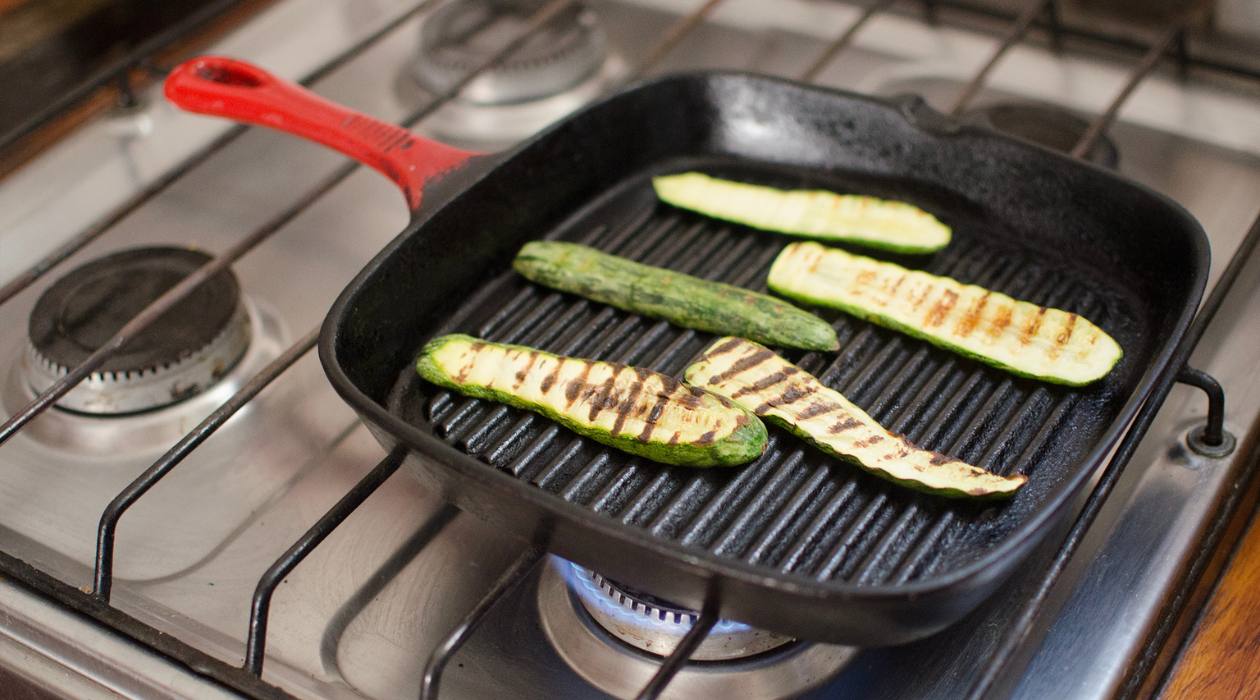

Articles
How To Use A Grill Pan On Stove Top
Modified: May 6, 2024
Discover expert tips and techniques on how to use a grill pan on your stove top with our informative articles. Enhance your cooking skills and create delicious meals with ease.
(Many of the links in this article redirect to a specific reviewed product. Your purchase of these products through affiliate links helps to generate commission for Storables.com, at no extra cost. Learn more)
Introduction
Welcome to the world of grilling! If you love the delicious charred flavors of grilled food but don’t have access to a backyard grill, don’t despair. With a grill pan and stove top, you can still achieve that smoky goodness right in your kitchen.
Grill pans are a versatile and convenient tool that allows you to enjoy the taste of grilled food without the need for an outdoor grill. They have a ridged surface that mimics the grill grates, providing those coveted grill marks and allowing excess fat or oil to drain away from the food.
In this article, we will explore the benefits of using a grill pan on a stove top, how to choose the right grill pan, the essential steps for preparing the grill pan, preheating techniques, grilling methods, cleaning and care tips, and important safety precautions.
Whether you’re a beginner or an experienced cook, this guide will equip you with the knowledge you need to create delicious grilled dishes using a grill pan on your stove top. Let’s dive in!
Key Takeaways:
- Enjoy the convenience and versatility of grilling indoors with a grill pan on your stove top. Achieve beautiful grill marks, healthier cooking, and easier cleanup while exploring your culinary creativity.
- Prioritize safety and proper care to maximize the longevity and performance of your grill pan. Follow essential preparation, cleaning, and safety precautions for worry-free and enjoyable indoor grilling.
Read more: How To Grill Chicken On Stove Top
What is a Grill Pan?
A grill pan is a specialized cookware that is designed to mimic the cooking experience of an outdoor grill, but on a stove top. It typically consists of a thick, heavy-bottomed pan with raised ridges or grates on the cooking surface. This ridged surface creates the characteristic grill marks on your food and helps to impart a smoky flavor.
Grill pans can be made from various materials, including cast iron, stainless steel, or aluminum. Cast iron grill pans are especially popular due to their excellent heat retention and ability to create those desirable grill marks. They also distribute heat evenly, ensuring that your food is cooked consistently.
What sets a grill pan apart from a regular frying pan or skillet is its ridged surface. These ridges serve two main purposes:
- Distinct Grill Marks: The ridges on a grill pan create beautiful grill marks on your food, enhancing both its appearance and flavor. These marks not only give your food an appetizing appearance but also help to caramelize its surface, adding depth and complexity to its taste.
- Drain Away Excess Fat: The ridges in a grill pan elevate your food, allowing excess fat or oil to drip down into the grooves. This helps to reduce the overall fat content of your dishes, making them healthier.
Grill pans are versatile tools that can be used to cook a wide variety of foods, including vegetables, fish, poultry, and even fruits. They’re especially great for foods that have a tendency to stick to the grill, as the ridges on the pan provide a barrier between the food and the surface, preventing it from sticking and tearing.
Benefits of Using a Grill Pan on a Stove Top
Using a grill pan on a stove top offers several advantages that make it a popular choice among home cooks. Here are some of the key benefits:
- Convenience: One of the biggest advantages of using a grill pan on a stove top is the convenience it provides. Unlike outdoor grilling, you can use a grill pan any time, regardless of the weather conditions. It allows you to enjoy the flavors of grilled food all year round, right in the comfort of your kitchen.
- Versatility: Grill pans are incredibly versatile and can be used to cook a wide range of foods. From juicy steaks and burgers to crispy vegetables, a grill pan can handle it all. You can experiment with different ingredients and flavors to create delicious grilled dishes without needing a separate outdoor grill.
- Controlled Cooking: Using a grill pan on a stove top gives you better control over the cooking process. You can adjust the heat accordingly to achieve the desired level of doneness. This means you can cook delicate items like fish or vegetables at lower temperatures while turning up the heat for a perfect sear on meats.
- Healthier Cooking: Grilling on a stove top using a grill pan can be a healthier cooking method compared to pan-frying or deep-frying. The raised ridges on the grill pan help drain away excess fat, reducing the calorie and fat content in your dishes. It also minimizes the need for additional oil, making it a healthier option.
- Beautiful Grill Marks: Presentation matters, and with a grill pan, you can achieve those coveted grill marks on your food. The attractive grill marks not only make your dish visually appealing but also add depth and texture to its flavor.
- Easier Cleanup: Unlike traditional outdoor grills, grill pans are much easier to clean. Most grill pans are non-stick, making them a breeze to wash. Additionally, the ridged surface prevents food from sticking, which reduces the time and effort required for scrubbing.
Overall, using a grill pan on a stove top is a convenient, versatile, and healthier alternative to outdoor grilling. It allows you to enjoy the flavors of grilled food at any time and gives you more control over the cooking process. Plus, the beautiful grill marks and easier cleanup are an added bonus. So go ahead and fire up that grill pan for your next culinary adventure!
Choosing the Right Grill Pan
When it comes to choosing the right grill pan for your stove top, there are a few factors to consider. Here are some important aspects to keep in mind:
- Material: Grill pans can be made from various materials, each with its own pros and cons. Cast iron is a popular choice due to its excellent heat retention and ability to create those beautiful grill marks. It provides even heat distribution and is extremely durable. Stainless steel pans are also a good option as they are resistant to rust and corrosion. Non-stick grill pans are convenient for easy food release and cleaning, but they may not provide the same sear as a cast iron pan.
- Size: Consider the size of the grill pan that will suit your cooking needs. Choose a size that fits comfortably on your stove top and can accommodate the amount of food you typically cook. Smaller grill pans are ideal for individual or small portions, while larger pans are great for cooking for a crowd.
- Ridges: Look for a grill pan with deep, well-defined ridges. These ridges not only create attractive grill marks but also help to drain away excess fat and prevent food from sticking to the surface.
- Handle: Ensure that the grill pan has a sturdy and heat-resistant handle. You will be handling the pan frequently, so a comfortable and secure grip is important to prevent accidents. It’s also a good idea to look for a handle that stays cool during cooking to avoid burns.
- Maintenance: Consider the maintenance and care required for the grill pan. Some materials, like cast iron, require seasoning and regular maintenance to maintain their non-stick properties and prevent rust. Non-stick pans, on the other hand, may be easier to clean but require gentle handling to avoid scratching the non-stick coating.
- Budget: Lastly, consider your budget when choosing a grill pan. Different materials and brands may vary in price, so it’s important to find a grill pan that fits within your budget while still meeting your cooking needs.
It’s a good idea to read product reviews and compare different options before making a purchase. This will help you make an informed decision and choose a grill pan that best suits your cooking style and preferences.
Remember, selecting the right grill pan is crucial for achieving excellent grilling results on your stove top. So take your time to evaluate the options and invest in a high-quality grill pan that will serve you well for years to come.
Preparing the Grill Pan
Properly preparing your grill pan before each use is essential for achieving optimal cooking results and avoiding sticking or uneven cooking. Here are the essential steps for preparing your grill pan:
- Wash and Dry: Before using your grill pan for the first time, wash it with warm, soapy water and a soft sponge or cloth. Rinse thoroughly and dry it completely. This will remove any manufacturing residue and ensure a clean cooking surface.
- Season Cast Iron: If you’re using a cast iron grill pan, it’s important to season it before the first use and periodically thereafter. Seasoning forms a protective layer on the pan’s surface and enhances its non-stick properties. To season, apply a thin layer of cooking oil to the entire surface, including the ridges. Place the pan in an oven preheated to a low temperature (around 350°F or 175°C) for about an hour. Allow it to cool and wipe away any excess oil.
- Apply Cooking Oil: Before each use, lightly coat the grill pan’s surface with cooking oil. This will help prevent food from sticking and make cleanup easier. Use a brush or a paper towel to evenly distribute a thin layer of oil on the ridges and cooking surface.
- Preheat the Grill Pan: Preheating the grill pan is crucial to ensure even cooking and achieve those beautiful grill marks. Place the grill pan on the stove top over medium-high heat and allow it to heat for about 5-7 minutes. The pan should be hot, but not smoking.
- Test for Readiness: To test if the grill pan is ready, sprinkle a few drops of water on the surface. If the water sizzles and evaporates almost immediately, the grill pan is properly preheated and ready for cooking.
By following these preparation steps, you’ll create the perfect cooking surface for your grill pan. The oil and preheating process will help prevent food from sticking and ensure even heat distribution, resulting in deliciously grilled meals.
Remember to handle the grill pan with care as it will be hot during the preheating process. Always use oven mitts or heat-resistant gloves to protect your hands.
Now that your grill pan is properly prepared, it’s time to get cooking! Whether you’re grilling meat, fish, vegetables, or even fruit, the grill pan will provide you with the perfect platform to achieve those flavorful grill marks and bring out the best in your food.
Preheat the grill pan on medium-high heat for 5-10 minutes before adding food. Use tongs to flip food and avoid using cooking spray to prevent smoke.
Read more: How To Make Grilled Cheese On Stove Top
Preheating the Stove Top
Properly preheating the stove top is an important step in using a grill pan to ensure even cooking and achieve those desirable grill marks. Here’s how you can preheat your stove top for grilling:
- Clean the Stove Top: Before preheating, make sure the stove top is clean and free of any debris or spills. This will prevent any unwanted smoke or burning smells during the preheating process.
- Select the Burners: Determine which burners on your stove top you will be using for grilling. If using a large grill pan, it’s best to choose two burners with sufficient space between them to accommodate the entire pan.
- Adjust the Heat: Set the burners to medium-high heat for preheating. The exact temperature will depend on your stove’s settings, so it may take some trial and error to find the ideal heat level. You want the pan to become hot enough to sear the food but not so hot that it burns excessively.
- Place the Grill Pan: Put the grill pan on the selected burners and let it preheat for at least 5-7 minutes. This will allow the pan to reach the desired temperature and ensure even cooking.
- Test the Heat: To check if the grill pan is properly preheated, sprinkle a few drops of water onto the surface. If the water sizzles and evaporates almost instantly, the pan is ready for grilling. If the water evaporates quickly, but without sizzling, the pan may need a little more time to heat up. If the water just sits there without any sizzling or evaporating, the pan is not yet hot enough.
It’s important to note that preheating times may vary depending on your stove’s heat output and the size and material of the grill pan. Cast iron pans, for example, tend to take longer to heat up, but they also retain heat better once hot.
While preheating, keep an eye on the grill pan to ensure it doesn’t overheat or smoke excessively. Adjust the heat if necessary to maintain the desired temperature.
Remember, proper preheating of both the grill pan and the stove top will ensure even cooking and those coveted grill marks on your food. So take the time to preheat correctly, and you’ll be well on your way to grilling perfection!
Grilling Techniques
Now that you have a preheated grill pan and a stove top ready for action, it’s time to delve into the art of grilling. Here are some essential grilling techniques to help you achieve delicious results:
- Oil the Food, Not the Pan: Instead of oiling the grill pan, lightly coat the food with oil before placing it on the hot pan. This helps create a barrier between the food and the pan’s surface, preventing sticking and promoting those beautiful grill marks.
- Place Food Diagonally: To achieve those classic crosshatch grill marks, place the food diagonally across the ridges of the grill pan. After a few minutes, rotate the food 90 degrees to create the second set of grill marks.
- Avoid Overcrowding: Overcrowding the grill pan can lead to steaming rather than grilling. Leave enough space between each piece of food to allow for proper heat circulation and ensure even cooking. Grill in batches if necessary.
- Use High Heat for Searing: When searing meat or fish, start with high heat to create a flavorful crust. Once the initial sear is achieved, lower the heat to finish cooking the inside without burning the exterior.
- Flip Carefully: Use tongs or a spatula to flip the food on the grill pan. Avoid using a fork, as it can pierce the food and cause it to lose juices.
- Time and Temperature: Different foods and cuts have varying cooking times and temperature requirements. It’s important to refer to specific recipes or guidelines to ensure that your food is cooked to the desired level of doneness.
- Monitor the Cooking Process: Keep a close eye on the food as it grills. Adjust the heat if needed to prevent burning or undercooking. Use a meat thermometer to check internal temperatures, especially for larger cuts of meat.
- Rest and Serve: After grilling, allow the food to rest for a few minutes before serving. This helps the juices redistribute, resulting in more flavorful and tender results.
Remember, practice makes perfect when it comes to grilling. As you gain experience, you’ll develop a better understanding of heat control, cooking times, and the nuances of different ingredients.
Don’t be afraid to experiment with seasonings, marinades, and glazes to enhance the flavors of your grilled creations. Grilling is not just about cooking food; it’s an opportunity to explore your culinary creativity and enjoy the incredible taste of grilled dishes right at home.
Cleaning and Care of the Grill Pan
Proper cleaning and care of your grill pan are essential to maintain its performance and prolong its lifespan. Here are some tips to help you keep your grill pan in top shape:
- Clean Immediately After Use: Clean your grill pan as soon as possible after each use. Letting the residue sit on the surface will make it harder to clean later.
- Remove Excess Food: Before cleaning, scrape off any bits of food or residue from the pan’s surface using a spatula or a grill brush. This will make the cleaning process easier.
- Hand Wash Only: Grill pans are typically not dishwasher safe. Wash your grill pan by hand using warm, soapy water and a non-abrasive sponge or cloth. Avoid using harsh abrasive cleaners or steel wool, as they can damage the pan’s surface.
- Stubborn Stains or Residue: If there are stubborn stains or residue on the grill pan, you can make a paste using baking soda and water. Apply the paste to the stained areas and let it sit for a few minutes. Then, scrub gently with a non-abrasive sponge or cloth to remove the stains.
- Avoid Soaking: While it may be tempting to soak the grill pan to loosen stubborn residue, prolonged soaking can damage the pan’s surface, especially if it’s made of cast iron. Instead, tackle tough stains with the baking soda paste or use a grill pan scraper for stubborn spots.
- Dry Thoroughly: After cleaning, dry the grill pan thoroughly with a towel or by air-drying it. Moisture can lead to rust or corrosion, especially for cast iron pans. Avoid leaving the grill pan to air-dry on a wet countertop, as it may cause water spots or staining.
- Apply a Thin Layer of Oil: To prevent rust and maintain the non-stick properties of a cast iron grill pan, lightly coat the surface with a thin layer of cooking oil after each use. This will help protect the pan and keep it in good condition.
- Store Properly: When not in use, store your grill pan in a dry place to avoid moisture buildup. If space is limited, you can place a cloth or paper towel between stacked pans to protect their surfaces.
By following these cleaning and care tips, you can ensure that your grill pan remains clean, functional, and in excellent condition for many delicious grilling sessions to come!
Safety Precautions
Grilling with a grill pan on a stove top can be a safe and enjoyable cooking method if you follow certain safety precautions. Here are some important safety tips to keep in mind:
- Use Heat-Resistant Gloves: When handling a hot grill pan, always use heat-resistant gloves or oven mitts to protect your hands from burns.
- Maintain Safe Distance: Keep a safe distance between the hot grill pan and any flammable materials such as curtains, paper towels, or plastic utensils. This will help prevent potential fire hazards.
- Take Care with Grease and Fat: As you grill, excess grease and fat can accumulate in the pan. Be cautious when disposing of this grease, as it can be flammable. Allow it to cool before discarding it in a safe container.
- Avoid Overheating: Do not leave the grill pan unattended on high heat for an extended period. This can lead to overheating and potentially cause fires or damage to the pan.
- Proper Ventilation: Ensure that your kitchen is well-ventilated when grilling with a grill pan. Open windows or turn on the exhaust fan to prevent smoke buildup and maintain good air quality.
- Be Mindful of Hot Handles: The handle of the grill pan can become hot during cooking. Always use a heat-resistant handle cover or oven mitts when gripping the handle to avoid burns.
- Keep Children and Pets Away: When grilling, it’s important to keep children and pets away from the stove top and grill pan to prevent accidents or injuries.
- Use Suitable Utensils: Use proper grilling utensils, such as tongs or a spatula, to flip or maneuver the food on the grill pan. Avoid using utensils with plastic handles that can melt or catch fire.
- Follow Manufacturer’s Instructions: Read and follow the manufacturer’s instructions and guidelines for the specific grill pan you are using. They may provide additional safety precautions or important usage tips.
By taking these safety precautions, you can enjoy the benefits of grilling with a grill pan on your stove top while minimizing the risk of accidents or incidents. Prioritize safety at all times to ensure a pleasant and worry-free cooking experience.
Read more: What Pans To Use On A Glass Top Stove
Conclusion
Using a grill pan on a stove top is a fantastic way to enjoy the flavors of grilled food without the need for an outdoor grill. With its ridged surface, the grill pan provides those coveted grill marks and drains away excess fat, making your dishes both visually appealing and healthier.
In this article, we’ve explored the benefits of using a grill pan on a stove top, including convenience, versatility, controlled cooking, and beautiful grill marks. We’ve discussed how to choose the right grill pan based on material, size, and maintenance requirements.
Preparing the grill pan by washing, seasoning (for cast iron pans), and preheating it is crucial for optimal cooking results. We’ve also covered important grilling techniques, such as oiling the food, grilling diagonally, and avoiding overcrowding.
After grilling, proper cleaning and care of the grill pan will ensure its longevity and consistent performance. Additionally, we’ve emphasized the importance of following safety precautions, such as using heat-resistant gloves, maintaining a safe distance from flammable materials, and proper ventilation.
By incorporating these guidelines into your grilling routine, you can create delicious and beautifully grilled dishes right in your kitchen. Whether it’s sizzling steaks, grilled vegetables, or succulent seafood, the grill pan and stove top combination will satisfy your craving for that smoky, charred flavor.
So, fire up your stove top, grab your favorite grill pan, and get ready to elevate your cooking skills. Enjoy the wonderful world of grilling with a grill pan on a stove top and impress your family and friends with mouthwatering grilled creations!
Ready to grill even more delicious meals? Perfect your skills with our guide on how long to cook brats on an indoor grill, where you'll learn the precise duration to cook brats to perfection. Meanwhile, if you're keen on upgrading your kitchen gear, don't miss our recommendations for amazing cooking tools that are dishwasher safe, promising both efficiency and ease of cleaning, right in time for 2024. These reads are sure to make your culinary adventures even more exciting and hassle-free!
Frequently Asked Questions about How To Use A Grill Pan On Stove Top
Was this page helpful?
At Storables.com, we guarantee accurate and reliable information. Our content, validated by Expert Board Contributors, is crafted following stringent Editorial Policies. We're committed to providing you with well-researched, expert-backed insights for all your informational needs.
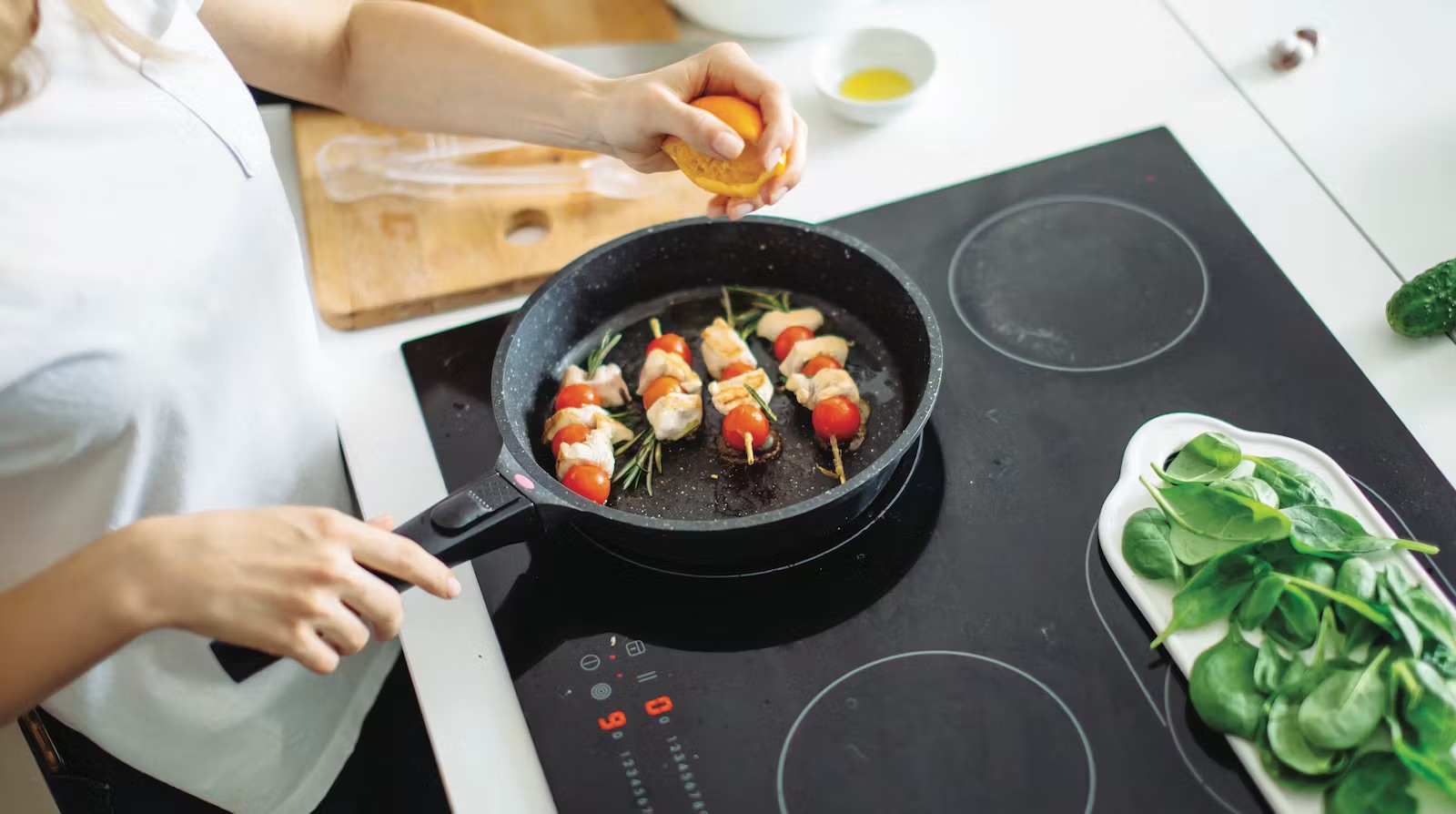
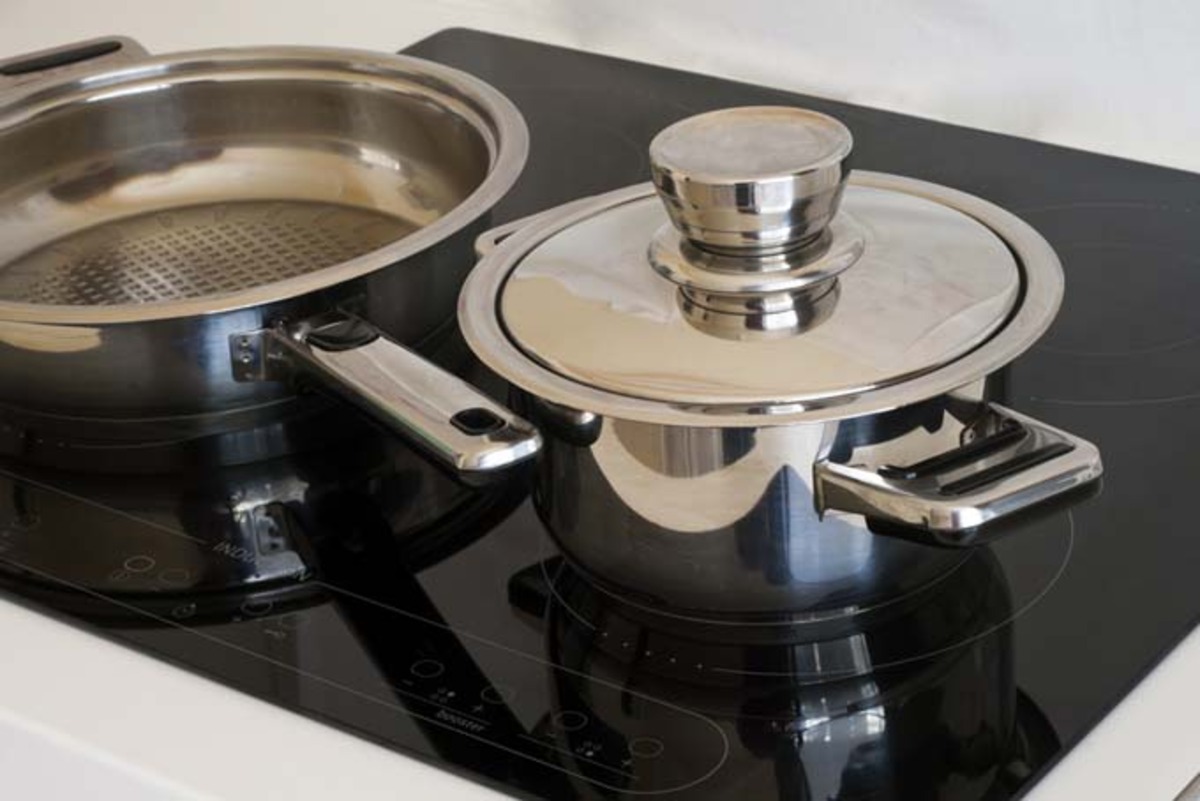
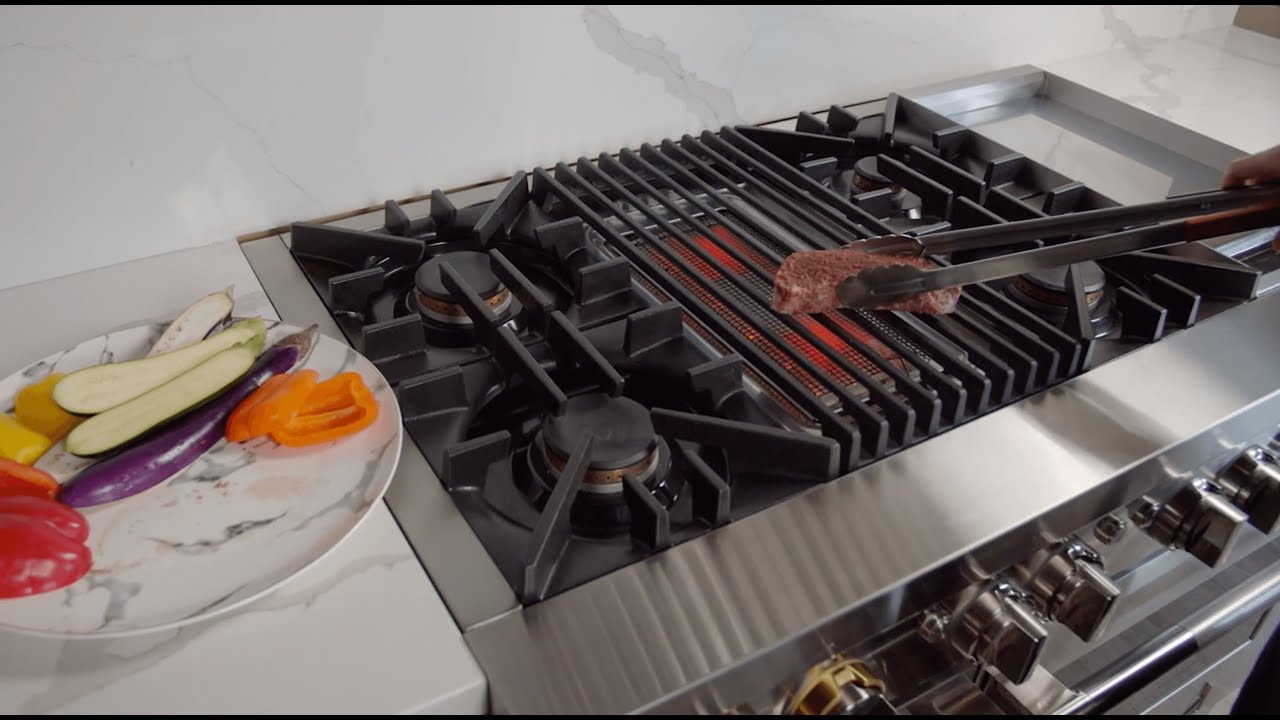
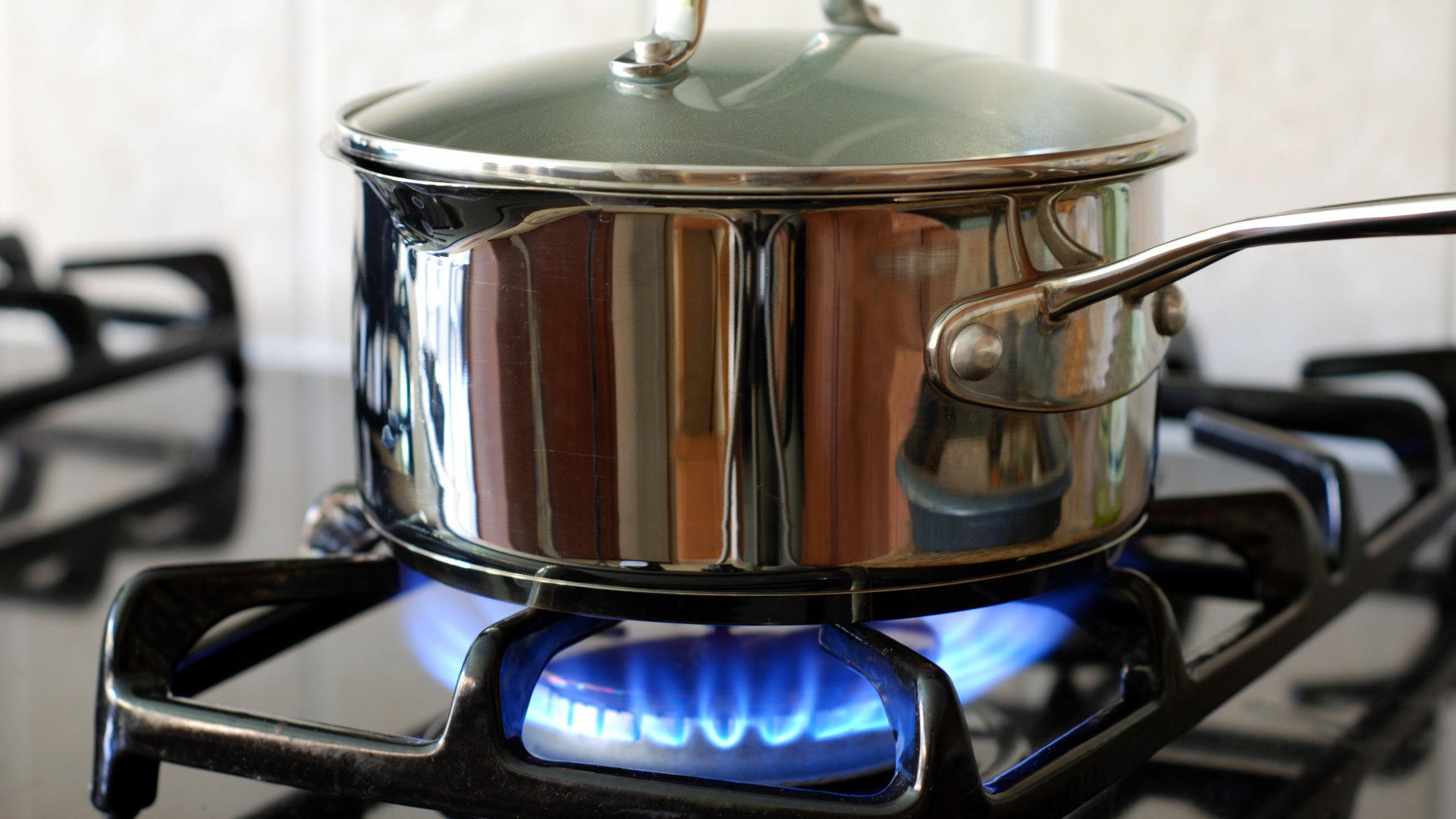
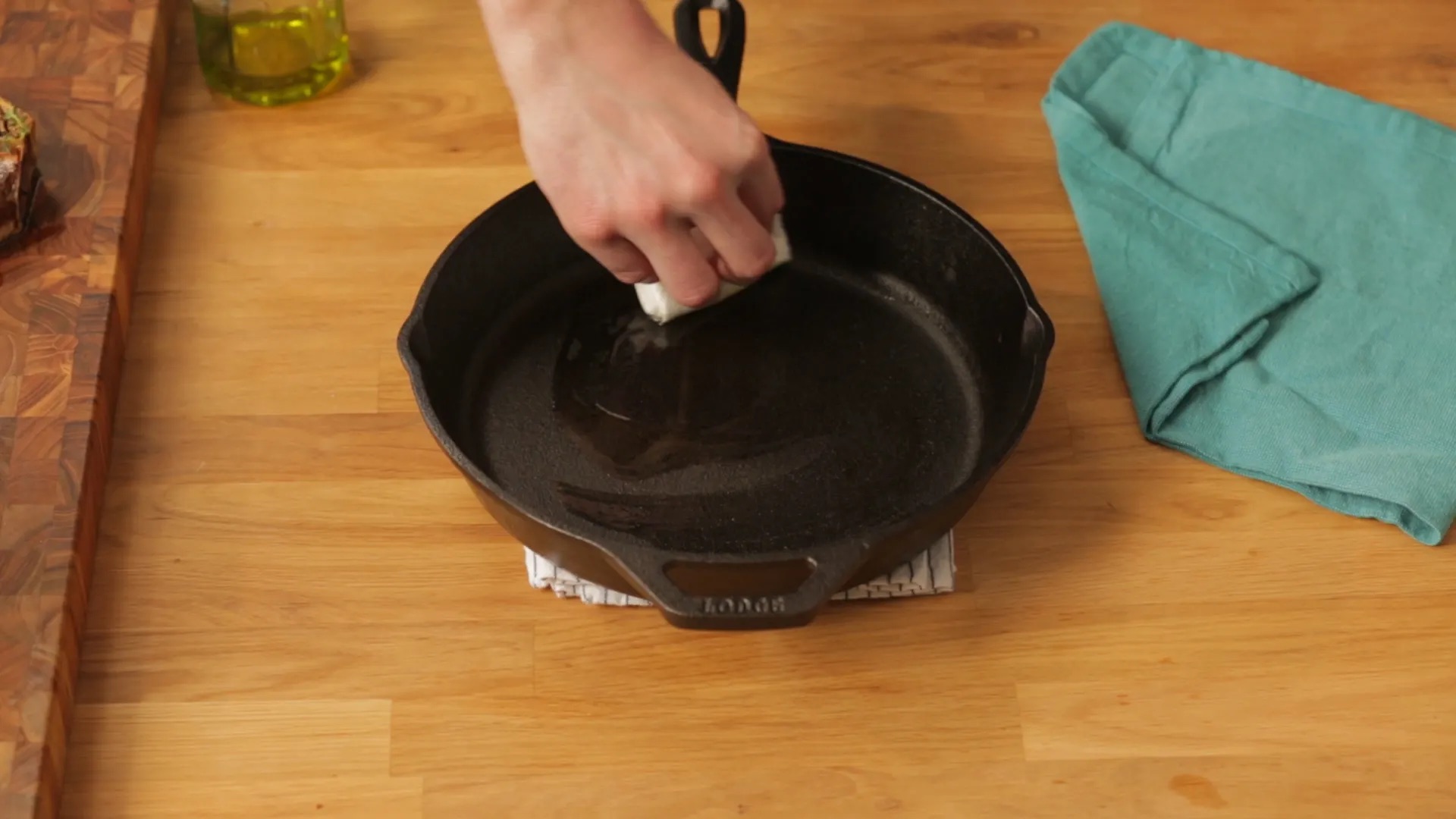
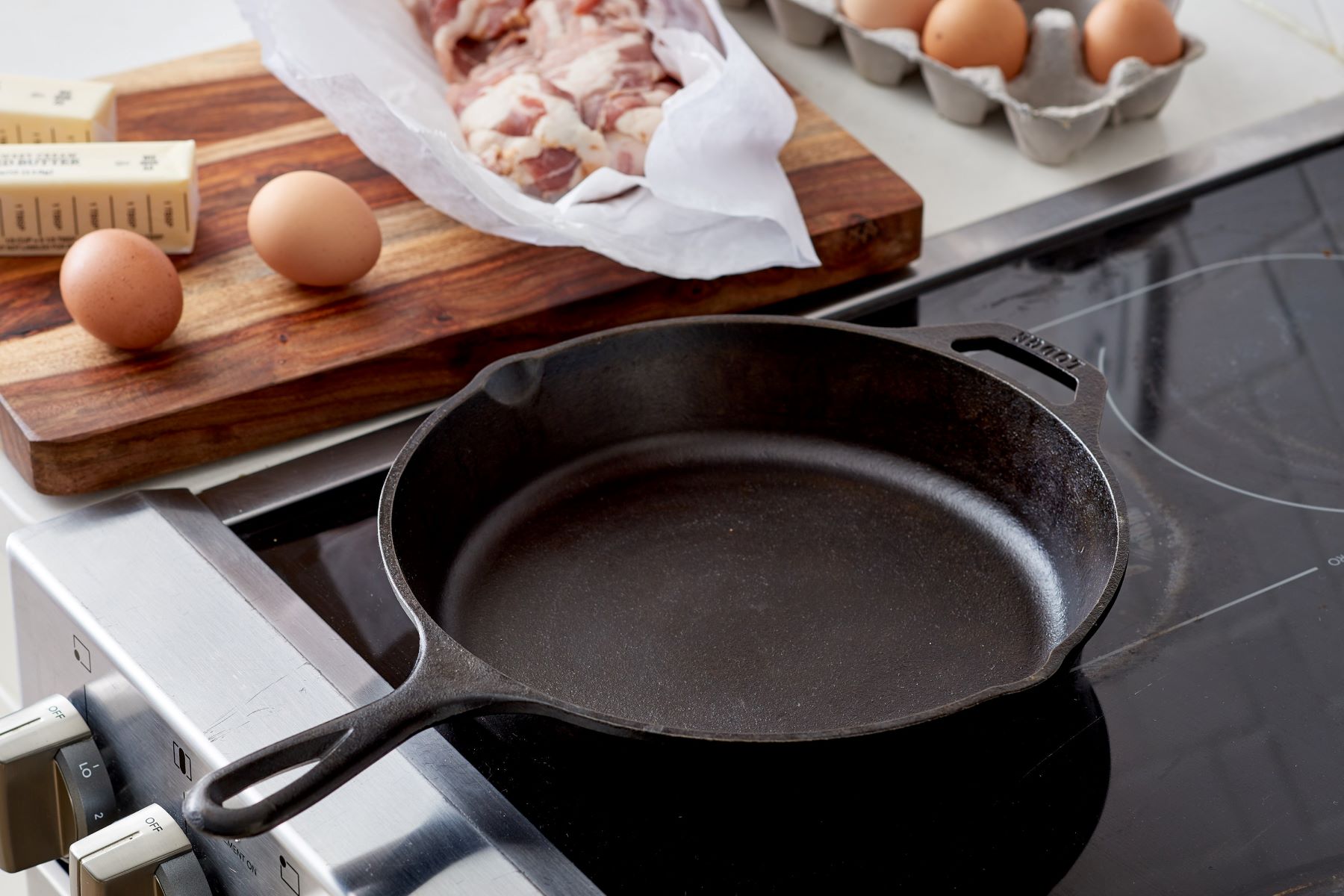
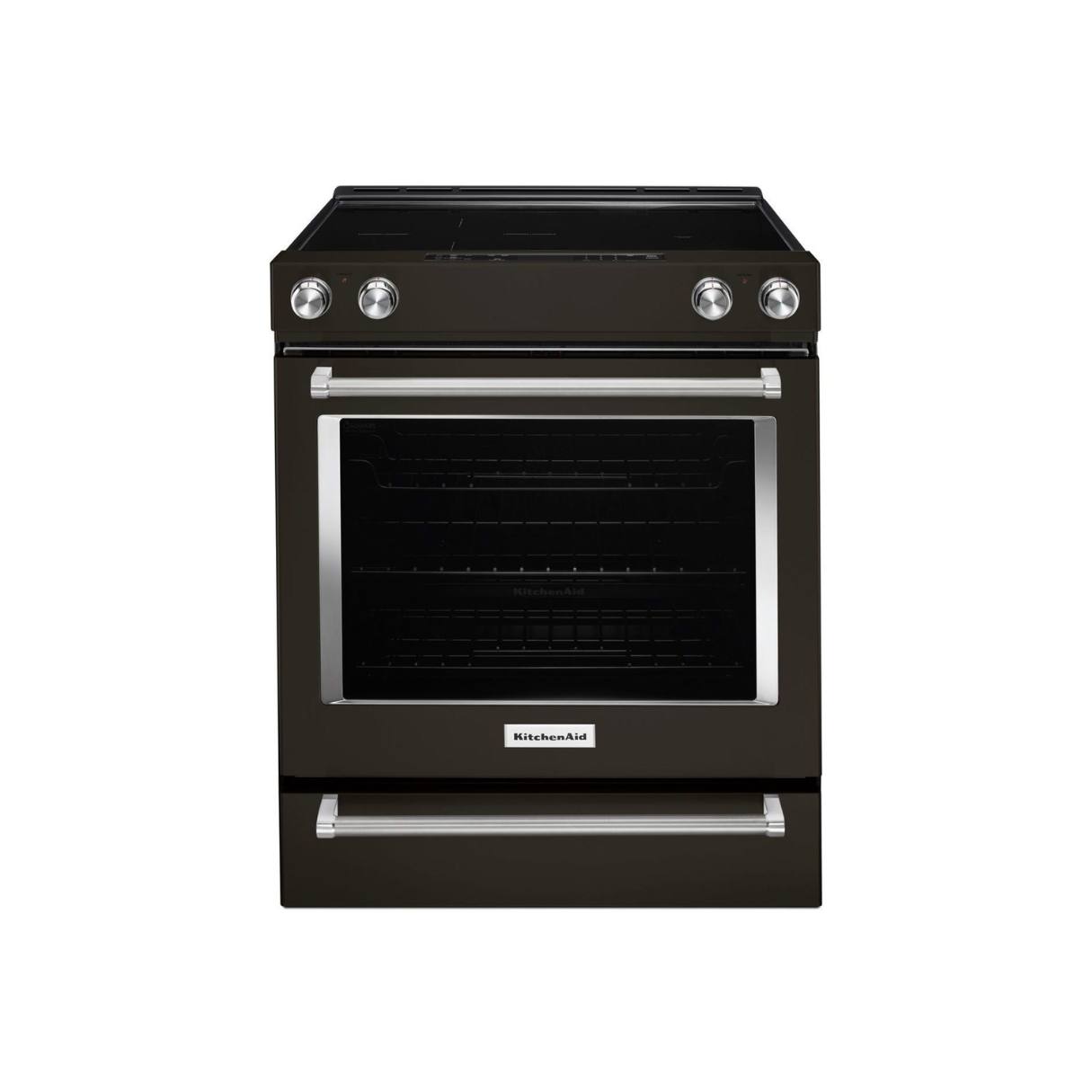
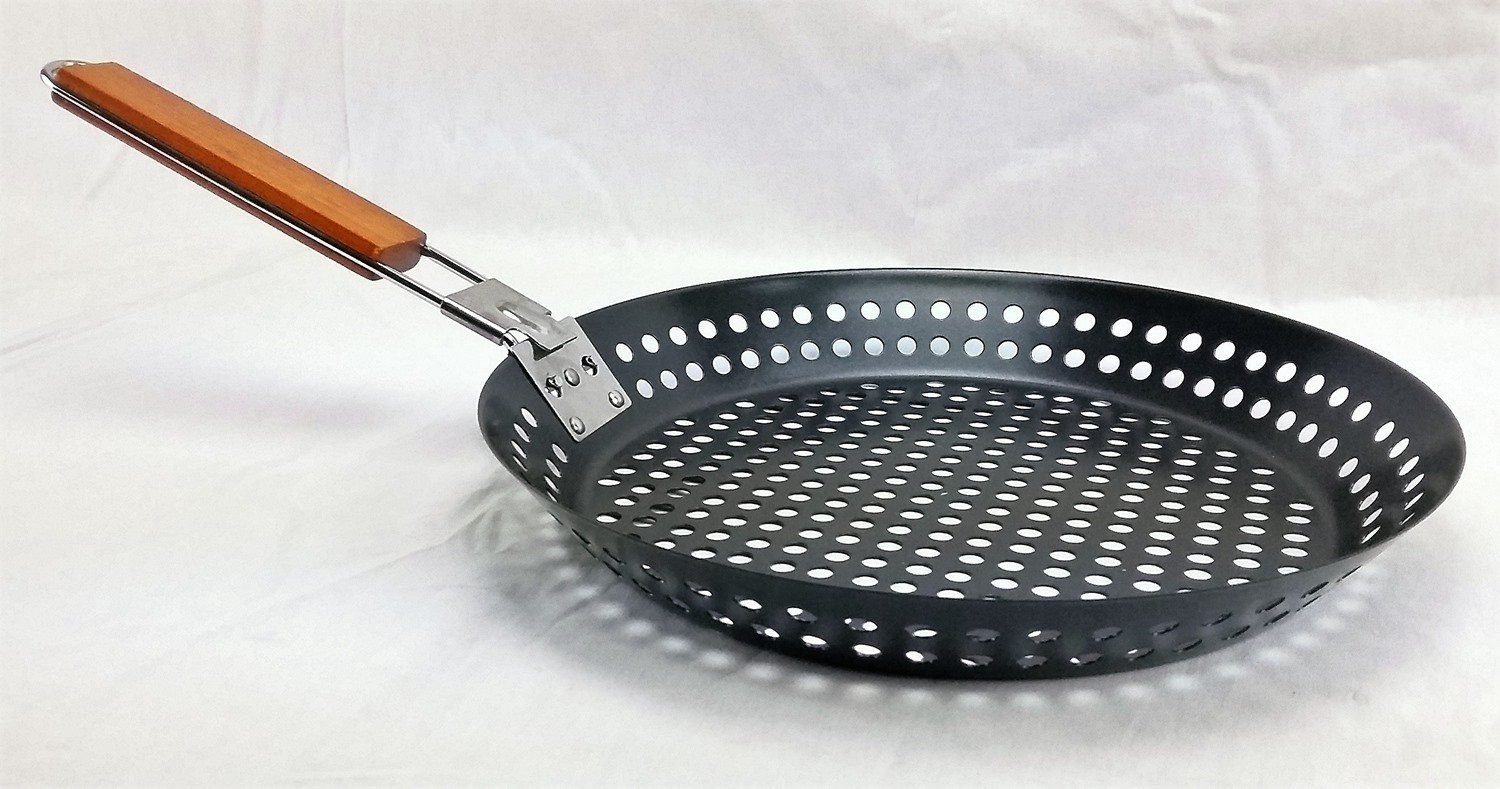
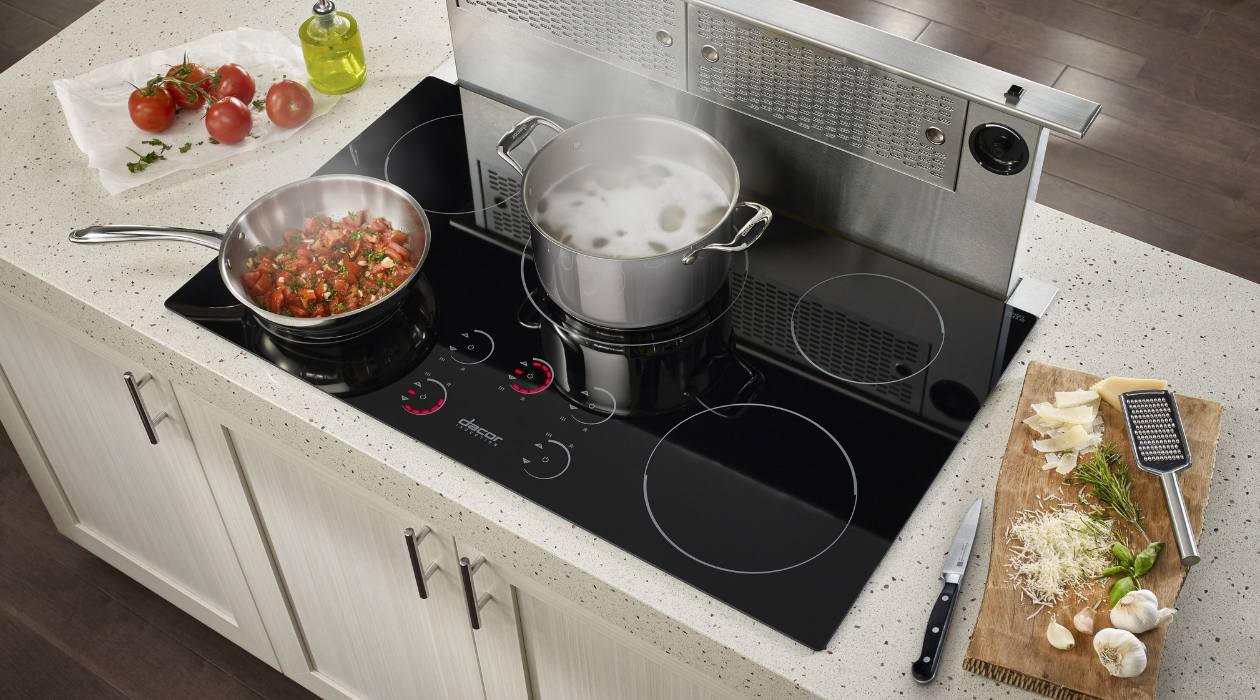
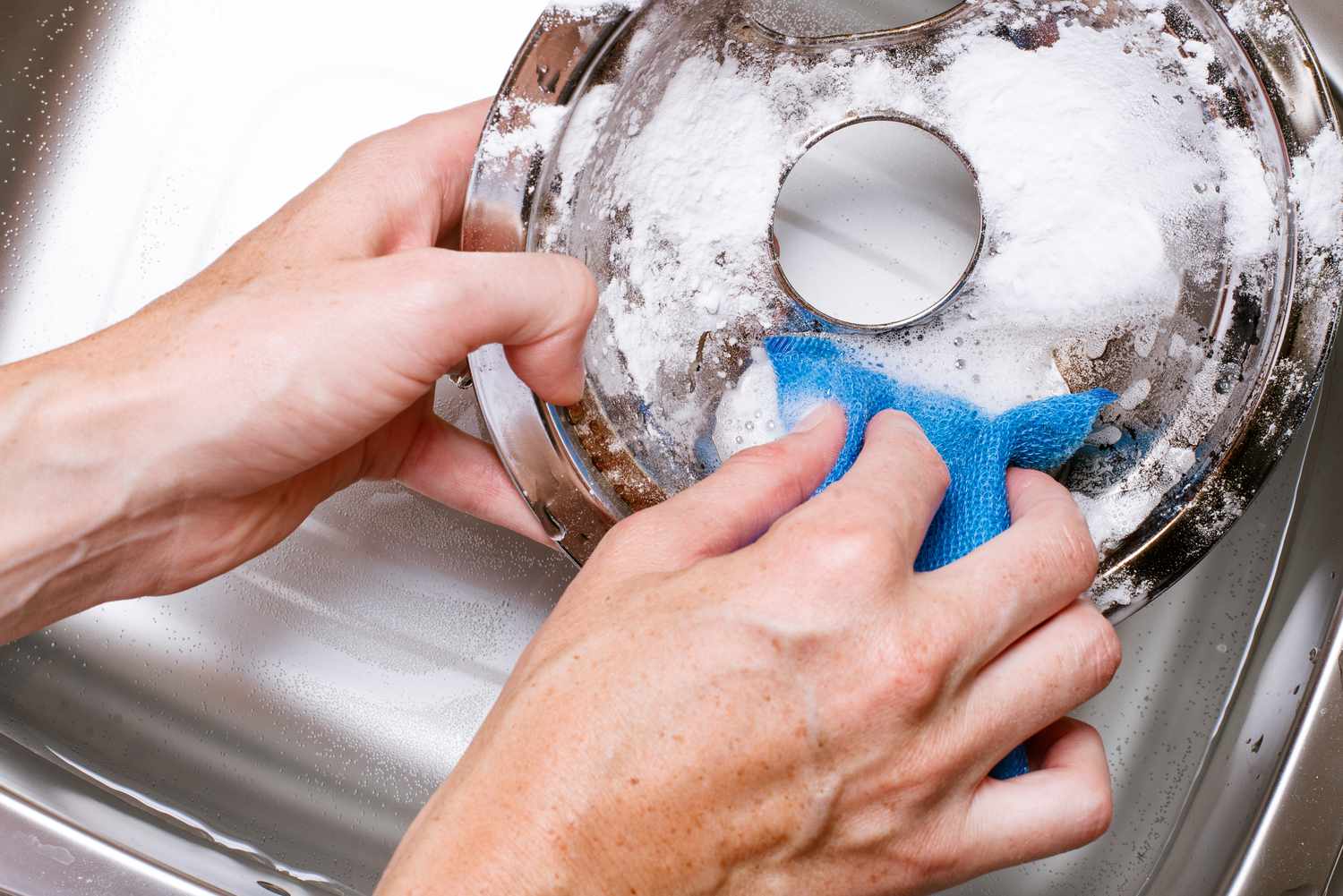
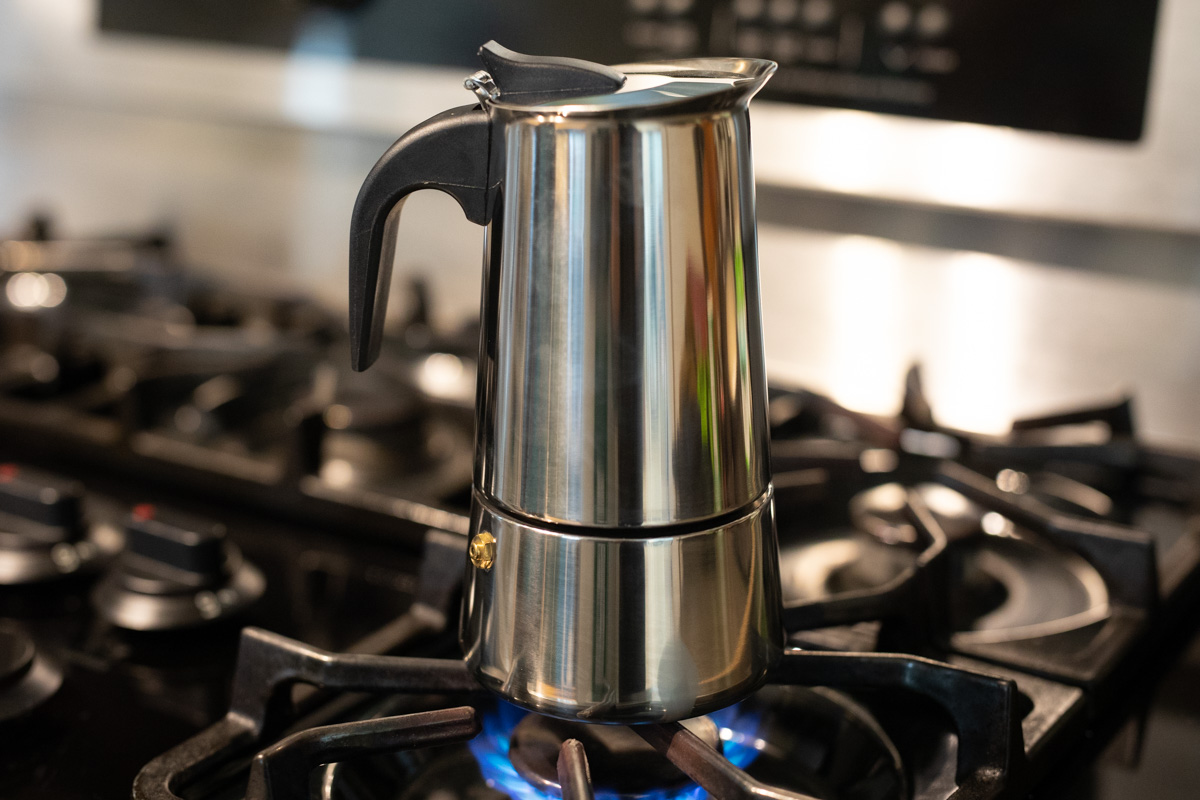
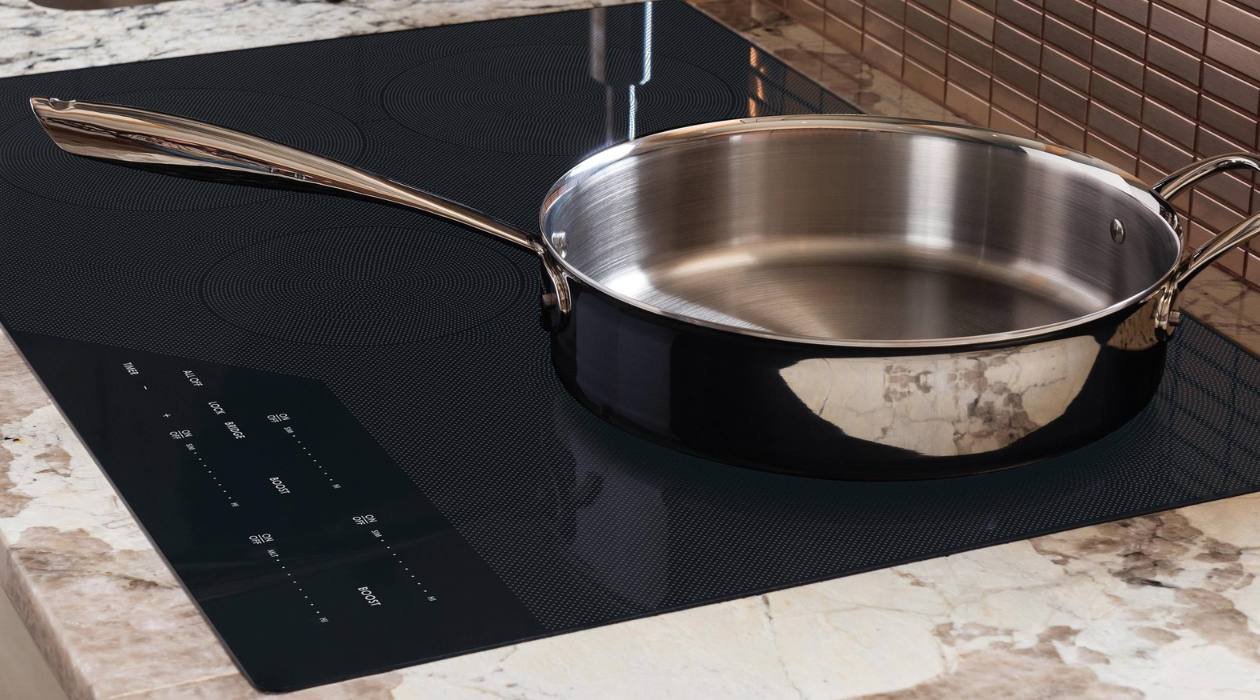
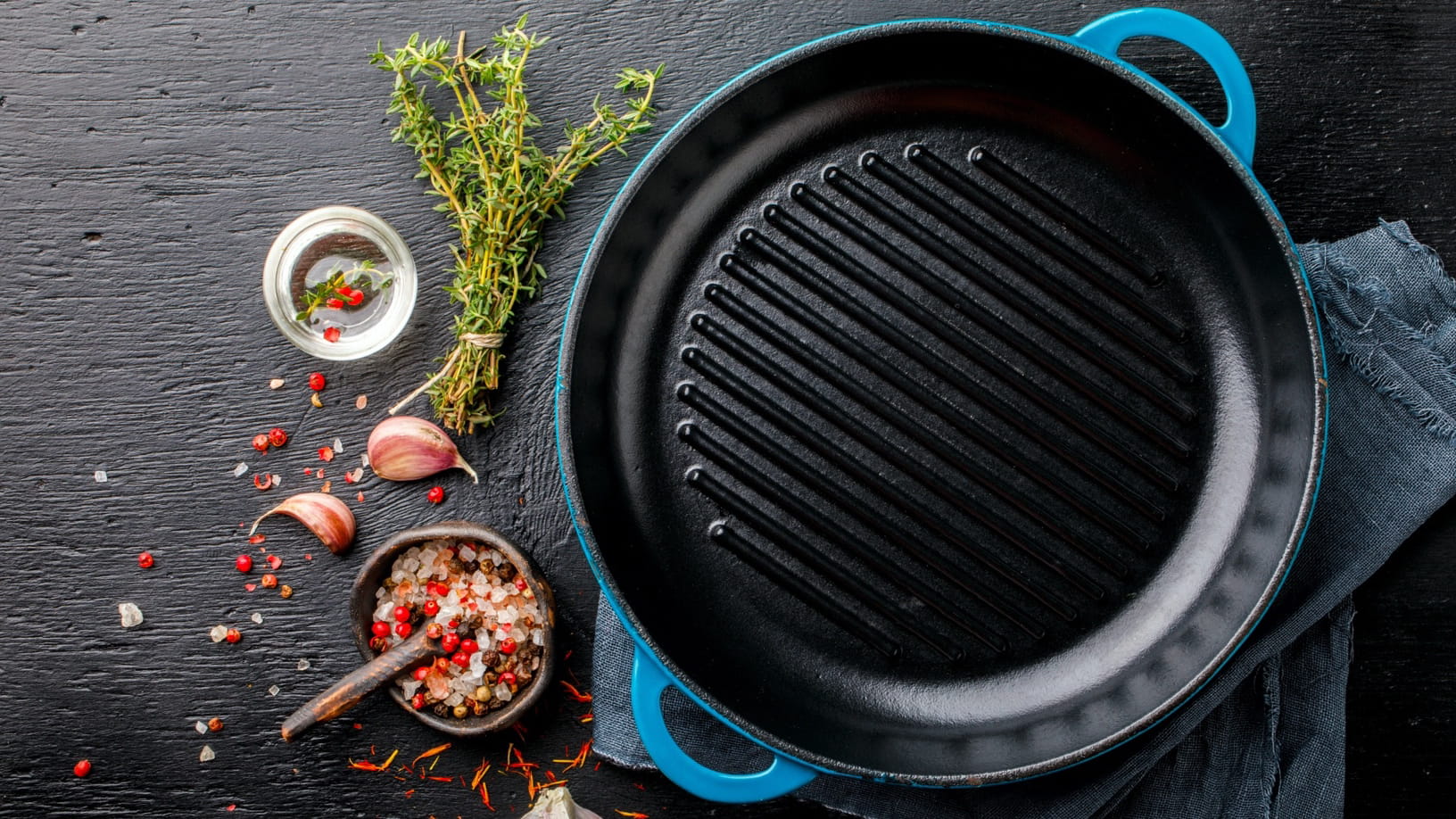

0 thoughts on “How To Use A Grill Pan On Stove Top”